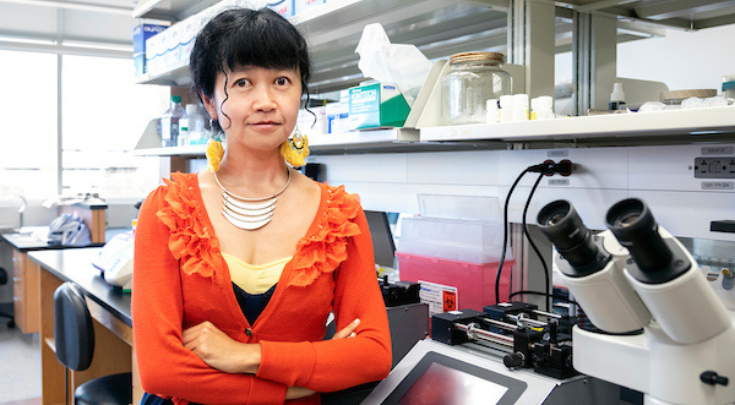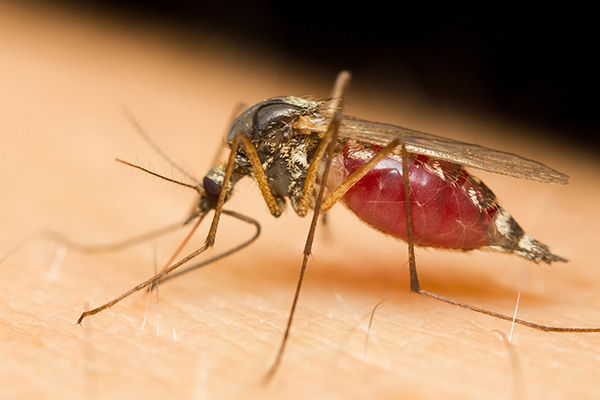For people in the United States, an outbreak of malaria might seem exotic, a health issue in a remote or far-away part of the world. But malaria − an insidious, mosquito-borne disease carried by a parasite − knows no boundaries and refuses to leave the global stage. In fact, the deadly Plasmodium falciparum kills an estimated 600,000 people a year, 95 percent of them children under age 5.
That’s one reason a University of South Florida College of Public Health researcher and her colleagues are concerned about any appearance of malaria in the United States, and they diligently identified and tracked a recent outbreak here in the Sunshine State.
“Despite malaria having been eradicated from the United States more than 70 years ago, and local transmissions having ceased for about 20 years, the risk persists,’’ said Rays H.Y. Jiang, PhD, an associate professor with the USF Genomics Program . “Malaria remains a significant global infectious disease that could potentially affect the United States again.’’
Jiang and a dozen researchers from Florida published new findings in the Emerging Infectious Diseases Journal of the Centers for Disease Control and Prevention in Atlanta. Titled “Autochthonous Plasmodium vivax Infections, Florida,” the paper underscores the usefulness and power of genomic tools in epidemiologic investigations, such as tracing the origins of malaria infection.

“It’s important to note that the risk of malaria in Florida remains low, and local transmission events like these are promptly stopped with all patients recovering,’’ Jiang added. “However, raising awareness, particularly among physicians in Florida, is crucial. This ensures early detection and appropriate treatment.’’
The CDC paper focused on a cluster of seven patients at hospitals around Florida who in 2023 were diagnosed with Plasmodium vivax malaria. Experts believe they were infected while visiting Central and South America.
All seven patients were concentrated within a four-mile radius, raising concern about potential local transmission cycles. To trace the origin of the infections, researchers isolated DNA from blood samples and ran it though highly sophisticated screening and comparison tests.
Jiang and her team examined the genomic characteristics, probable transmission dynamics, and likely origins of the 2023 strain in Florida, demonstrating the role of genomic epidemiology (tracking pathogens) and the scale of intervention required to prevent infection or outbreak.
“In sum, our phylogenomic analysis support the interpretation of a single, limited introduction event from Central/South America into Florida,’’ the study states. “Although the risk for autochthonous (local) malaria in the U.S. remains low, the potential threat of imported P. vivax setting off and establishing local transmission … in conducive environments is a public health concern.’’
Malaria is most prevalent in parts of Africa, where strained health care systems struggle with prevention techniques and treatment. While malaria isn’t endemic in Florida, the state is home to the Anopheles mosquito, which is responsible for spreading the disease. Untreated malaria caused by P. falciparum, a protozoan parasite, can be life threatening.

Half the world’s population is at risk for malaria, a mosquito-borne disease becoming increasingly resistant to the drug artemisinin. (Photo courtesty of USF Health Communications)
In addition, Florida’s long summers and mild winters allow mosquitoes more time to breed. This could be exacerbated by global warming, experts believe, as entire populations of insects might migrate from their normal home.
“Climate change could create more suitable habitats for Anopheles mosquitoes, which thrive in warm and wet environments,’’ Jiang said. “This could potentially lead to an expansion of their geographic range, increasing the risk of disease transmission.’’
Jiang collaborated on the CDC paper with researchers from USF, Tampa General Hospital and the Florida Department of Health, including co-senior authors Drs. Liwang Cui and Kami Kim, along with lead author Swamy Adapa and contributing author Dr. John Adams. The team hopes their research leads to new pathways in solving the riddle of malaria on a world-wide scale.
“Malaria remains a significant global health challenge, particularly in regions where it is endemic,’’ Jiang said. “With no highly effective vaccines currently available, early detection and treatment are crucial.’’
